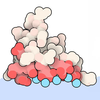Entry Database : PDB / ID : 2pw8Title Crystal structure of sulfo-hirudin complexed to thrombin Hirudin variant-1 Thrombin heavy chain Thrombin light chain Keywords / / / Function / homology Function Domain/homology Component
/ / / / / / / / / / / / / / / / / / / / / / / / / / / / / / / / / / / / / / / / / / / / / / / / / / / / / / / / / / / / / / / / / / / / / / / / / / / / / / / / / / / / / / / / / / / / / / / / / / / / / / / / / / / / / / / / / / / / / / / / / / / Biological species Hirudo medicinalis (medicinal leech)Homo sapiens (human)Method / / / Resolution : 1.84 Å Authors Liu, C.C. / Brustad, E. / Liu, W. / Schultz, P.G. Journal : J.Am.Chem.Soc. / Year : 2007Title : Crystal structure of a biosynthetic sulfo-hirudin complexed to thrombin.Authors : Liu, C.C. / Brustad, E. / Liu, W. / Schultz, P.G. History Deposition May 10, 2007 Deposition site / Processing site Revision 1.0 Aug 21, 2007 Provider / Type Revision 1.1 Jul 13, 2011 Group Revision 1.2 Aug 30, 2023 Group Data collection / Database references ... Data collection / Database references / Derived calculations / Refinement description Category chem_comp_atom / chem_comp_bond ... chem_comp_atom / chem_comp_bond / database_2 / pdbx_initial_refinement_model / pdbx_struct_conn_angle / struct_conn / struct_conn_type / struct_ref_seq_dif / struct_site Item _database_2.pdbx_DOI / _database_2.pdbx_database_accession ... _database_2.pdbx_DOI / _database_2.pdbx_database_accession / _pdbx_struct_conn_angle.ptnr1_auth_asym_id / _pdbx_struct_conn_angle.ptnr1_auth_comp_id / _pdbx_struct_conn_angle.ptnr1_auth_seq_id / _pdbx_struct_conn_angle.ptnr1_label_asym_id / _pdbx_struct_conn_angle.ptnr1_label_atom_id / _pdbx_struct_conn_angle.ptnr1_label_comp_id / _pdbx_struct_conn_angle.ptnr1_label_seq_id / _pdbx_struct_conn_angle.ptnr3_auth_asym_id / _pdbx_struct_conn_angle.ptnr3_auth_comp_id / _pdbx_struct_conn_angle.ptnr3_auth_seq_id / _pdbx_struct_conn_angle.ptnr3_label_asym_id / _pdbx_struct_conn_angle.ptnr3_label_atom_id / _pdbx_struct_conn_angle.ptnr3_label_comp_id / _pdbx_struct_conn_angle.ptnr3_label_seq_id / _pdbx_struct_conn_angle.value / _struct_conn.conn_type_id / _struct_conn.id / _struct_conn.pdbx_dist_value / _struct_conn.pdbx_leaving_atom_flag / _struct_conn.pdbx_ptnr1_PDB_ins_code / _struct_conn.ptnr1_auth_asym_id / _struct_conn.ptnr1_auth_comp_id / _struct_conn.ptnr1_auth_seq_id / _struct_conn.ptnr1_label_asym_id / _struct_conn.ptnr1_label_atom_id / _struct_conn.ptnr1_label_comp_id / _struct_conn.ptnr1_label_seq_id / _struct_conn.ptnr2_auth_asym_id / _struct_conn.ptnr2_auth_comp_id / _struct_conn.ptnr2_auth_seq_id / _struct_conn.ptnr2_label_asym_id / _struct_conn.ptnr2_label_atom_id / _struct_conn.ptnr2_label_comp_id / _struct_conn.ptnr2_label_seq_id / _struct_conn_type.id / _struct_ref_seq_dif.details / _struct_site.pdbx_auth_asym_id / _struct_site.pdbx_auth_comp_id / _struct_site.pdbx_auth_seq_id Revision 1.3 Nov 15, 2023 Group / Category / chem_comp_bond / Item / _chem_comp_bond.atom_id_2Revision 1.4 Nov 20, 2024 Group / Category / pdbx_modification_feature
Show all Show less
 Open data
Open data Basic information
Basic information Components
Components Keywords
Keywords Function and homology information
Function and homology information Hirudo medicinalis (medicinal leech)
Hirudo medicinalis (medicinal leech) Homo sapiens (human)
Homo sapiens (human) X-RAY DIFFRACTION /
X-RAY DIFFRACTION /  SYNCHROTRON /
SYNCHROTRON /  MOLECULAR REPLACEMENT / Resolution: 1.84 Å
MOLECULAR REPLACEMENT / Resolution: 1.84 Å  Authors
Authors Citation
Citation Journal: J.Am.Chem.Soc. / Year: 2007
Journal: J.Am.Chem.Soc. / Year: 2007 Structure visualization
Structure visualization Molmil
Molmil Jmol/JSmol
Jmol/JSmol Downloads & links
Downloads & links Download
Download 2pw8.cif.gz
2pw8.cif.gz PDBx/mmCIF format
PDBx/mmCIF format pdb2pw8.ent.gz
pdb2pw8.ent.gz PDB format
PDB format 2pw8.json.gz
2pw8.json.gz PDBx/mmJSON format
PDBx/mmJSON format Other downloads
Other downloads 2pw8_validation.pdf.gz
2pw8_validation.pdf.gz wwPDB validaton report
wwPDB validaton report 2pw8_full_validation.pdf.gz
2pw8_full_validation.pdf.gz 2pw8_validation.xml.gz
2pw8_validation.xml.gz 2pw8_validation.cif.gz
2pw8_validation.cif.gz https://data.pdbj.org/pub/pdb/validation_reports/pw/2pw8
https://data.pdbj.org/pub/pdb/validation_reports/pw/2pw8 ftp://data.pdbj.org/pub/pdb/validation_reports/pw/2pw8
ftp://data.pdbj.org/pub/pdb/validation_reports/pw/2pw8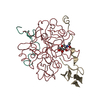
 Links
Links Assembly
Assembly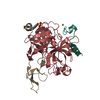
 Components
Components Homo sapiens (human) / References: UniProt: P00734
Homo sapiens (human) / References: UniProt: P00734 Homo sapiens (human) / References: UniProt: P00734
Homo sapiens (human) / References: UniProt: P00734 Hirudo medicinalis (medicinal leech) / Production host:
Hirudo medicinalis (medicinal leech) / Production host: 
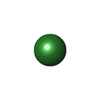




 X-RAY DIFFRACTION / Number of used crystals: 1
X-RAY DIFFRACTION / Number of used crystals: 1  Sample preparation
Sample preparation SYNCHROTRON / Site:
SYNCHROTRON / Site:  ALS
ALS  / Beamline: 5.0.1 / Wavelength: 1 Å
/ Beamline: 5.0.1 / Wavelength: 1 Å Processing
Processing MOLECULAR REPLACEMENT
MOLECULAR REPLACEMENT Movie
Movie Controller
Controller








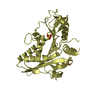

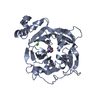
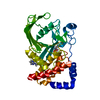
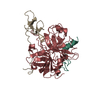
 PDBj
PDBj


